MAC Tutu Good, Jingle Ball Bronze, Motif, If It Ain't Baroque, Marsh Eyeshadows Reviews & Swatches
Tutu Good
MAC Tutu Good Eyeshadow ($17.00 for 0.05 oz.) is a light-medium, rosy copper base with flecks of pink and copper sparkle throughout. It had a more textured feel to it due to the amount (and size) of sparkle in the finish, and it seemed drier, too, so there was some fallout and difficulty in getting the product to lay smoothly on my lid.
I’d recommend applying it with a fingertip or a dampened brush as both methods yielded a smoother, more even application with less fallout. It had semi-opaque, buildable pigmentation that stayed on well for eight hours but had light fallout over time.
FURTHER READING: Formula Overview for details on general performance and characteristics (like scent).
Top Dupes
- Danessa Myricks Venus (P, $18.00) is more shimmery, darker, less pigmented (95% similar).
- Moira Venus (P, $7.50) is less shimmery (95% similar).
- ColourPop Designer Duds (PiP, $4.50) is more shimmery, brighter (90% similar).
- Pat McGrath CosmiK (LE, $25.00) is more shimmery, darker (90% similar).
- Give Me Glow Mystery Topper (P, $7.00) is more shimmery, darker (90% similar).
- Pat McGrath VR Violet (PiP, $25.00) is more shimmery, darker, more pigmented (90% similar).
- Melt Cosmetics Hopeless Romantix (PiP, ) is less shimmery, warmer (90% similar).
- Urban Decay Trademark This (LE, $19.00) is less shimmery, warmer (90% similar).
- Auric Disrupt (Powder) (PiP, ) is less shimmery, cooler (90% similar).
- KVD Beauty Quartz (LE, ) is more shimmery, darker (85% similar).
Formula Overview
$17.00/0.05 oz. - $340.00 Per Ounce
The formula is supposed to be a "highly pigmented powder" that goes on "evenly and blends well." MAC eyeshadows run the gamut from total failures to long-time, cult-favorite staples. In general, the permanent line has been more consistent in performance--and higher performance at that--compared to limited edition launches, but it can really depend.
The Matte finish tends to have a firmer press and a bit of thinness compared to other matte formulas on the market, so MAC matte eyeshadows tend to build up better and have better wear-time without fallout as they're not powdery at all. Some of the newer matte finish shades have had a more velvety quality to them that gives them a softer feel but aren't powdery; these have been easier to blend and are often more pigmented in one layer.
The Lustre finish is designed to have sheerer pigmentation, and it often has more sheer to medium coverage with a drier, dustier consistency that can be hard to apply with a dry brush. Lustre finish shades can suffer from fallout during application, too. They are the old school version of an eyeshadow "topper." I would recommend applying with a fingertip or applying with a dampened brush to get smoother, more even coverage and minimize fallout.
The Satin finish is few and far in-between, but it is softer and more yielding than the Matte finish but performs similarly. They tend to have very low sheen but are quite blendable with medium to opaque coverage. It can be easy to mix the finish up with the Velvet finish, which has more of a sparkle-over-matte effect but are more powdery than the true Matte finish.
The Frost finish is more firmly-pressed into the pan but doesn't have fallout, is often pigmented, and blends out well enough. They can sometimes be a little drier to the touch depending on how much shimmer is in the shade. The Veluxe Pearl finish is one of the creamier takes within the range, and newer shades released in the finish tend to have more moderate, silicone-like slip. I've found that Veluxe Pearl finish shades tend to have more semi-opaque pigmentation and are more consistent in performance than some of the other finishes.
One thing I've found with MAC eyeshadows is that they tend to last longer without primer than the average brand (eight hours). While some eyeshadow shades don't swatch well, they often apply better in practice--as in on the eyes!--than just swatched on the skin. They can be quite hit or miss, and they have inconsistencies between releases (see Carbon and its sordid review history!).
Browse all of our MAC Eyeshadow swatches.
Ingredients
Talc, Zinc Stearate, Octyldodecyl Stearoyl Stearate, Isostearyl Neopentanoate, Tocopheryl Acetate, Caprylyl Glycol, Hexylene Glycol, Phenoxyethanol, [+/- Silica, Mica, Titanium Dioxide (Ci 77891), Iron Oxides (Ci 77491, Ci 77492, Ci 77499), Bismuth Oxychloride (Ci 77163), Blue 1 Lake (Ci 42090), Carmine (Ci 75470), Chromium Hydroxide Green (Ci 77289), Chromium Oxide Greens (Ci 77288), Ferric Ferrocyanide (Ci 77510), Manganese Violet (Ci 77742), Red 40 Lake (Ci 16035), Ultramarines (Ci 77007), Yellow 5 Lake (Ci 19140)]
Disclaimer: Ingredient lists are as available by the brand (or retailer) at the time of publishing. Please always check product packaging, if it exists, for the ingredient list applicable to the product you're purchasing, or the brand or retailer's website for the most up-to-date ingredient list.
Look Using this Product
Tutu Good
PPermanent. $17.00.
Jingle Ball Bronze
MAC Jingle Ball Bronze Eyeshadow ($17.00 for 0.05 oz.) is a medium copper with strong, warm undertones and a pearly sheen. It had semi-opaque pigmentation that was buildable to full coverage with a second layer or if applied with a dampened brush.
The texture was fairly soft and blendable, but it was prone to fallout due to it being on the dustier side. It wore well for seven and a half hours before fading visibly.
FURTHER READING: Formula Overview for details on general performance and characteristics (like scent).
Top Dupes
- Lisa Eldridge Lauren (P, $27.00) is more shimmery (95% similar).
- NARS L'Amour, Toujours L'Amour #6 (DC, $25.00) is less shimmery (95% similar).
- MAC Golden (LE, $21.00) is lighter (95% similar).
- Pat McGrath Bronze Nebula (LE, $25.00) is more shimmery (95% similar).
- Melt Cosmetics Hot Wire (PiP, ) is darker (95% similar).
- Dominique Cosmetics Drizzle (PiP, ) is more shimmery, darker (95% similar).
- Kaja Churro (LE, ) is darker (95% similar).
- Natasha Denona Cannon (366M) (LE, $29.00) is lighter (95% similar).
- ColourPop Hammer Time (LE, $4.50) is more shimmery, lighter (95% similar).
- Makeup by Mario Master Metallics #7 (PiP, ) is more shimmery (95% similar).
Formula Overview
$17.00/0.05 oz. - $340.00 Per Ounce
The formula is supposed to be a "highly pigmented powder" that goes on "evenly and blends well." MAC eyeshadows run the gamut from total failures to long-time, cult-favorite staples. In general, the permanent line has been more consistent in performance--and higher performance at that--compared to limited edition launches, but it can really depend.
The Matte finish tends to have a firmer press and a bit of thinness compared to other matte formulas on the market, so MAC matte eyeshadows tend to build up better and have better wear-time without fallout as they're not powdery at all. Some of the newer matte finish shades have had a more velvety quality to them that gives them a softer feel but aren't powdery; these have been easier to blend and are often more pigmented in one layer.
The Lustre finish is designed to have sheerer pigmentation, and it often has more sheer to medium coverage with a drier, dustier consistency that can be hard to apply with a dry brush. Lustre finish shades can suffer from fallout during application, too. They are the old school version of an eyeshadow "topper." I would recommend applying with a fingertip or applying with a dampened brush to get smoother, more even coverage and minimize fallout.
The Satin finish is few and far in-between, but it is softer and more yielding than the Matte finish but performs similarly. They tend to have very low sheen but are quite blendable with medium to opaque coverage. It can be easy to mix the finish up with the Velvet finish, which has more of a sparkle-over-matte effect but are more powdery than the true Matte finish.
The Frost finish is more firmly-pressed into the pan but doesn't have fallout, is often pigmented, and blends out well enough. They can sometimes be a little drier to the touch depending on how much shimmer is in the shade. The Veluxe Pearl finish is one of the creamier takes within the range, and newer shades released in the finish tend to have more moderate, silicone-like slip. I've found that Veluxe Pearl finish shades tend to have more semi-opaque pigmentation and are more consistent in performance than some of the other finishes.
One thing I've found with MAC eyeshadows is that they tend to last longer without primer than the average brand (eight hours). While some eyeshadow shades don't swatch well, they often apply better in practice--as in on the eyes!--than just swatched on the skin. They can be quite hit or miss, and they have inconsistencies between releases (see Carbon and its sordid review history!).
Browse all of our MAC Eyeshadow swatches.
Ingredients
Talc, Zinc Stearate, Octyldodecyl Stearoyl Stearate, Isostearyl Neopentanoate, Tocopheryl Acetate, Caprylyl Glycol, Hexylene Glycol, Phenoxyethanol, [+/- Silica, Mica, Titanium Dioxide (Ci 77891), Iron Oxides (Ci 77491, Ci 77492, Ci 77499), Bismuth Oxychloride (Ci 77163), Blue 1 Lake (Ci 42090), Carmine (Ci 75470), Chromium Hydroxide Green (Ci 77289), Chromium Oxide Greens (Ci 77288), Ferric Ferrocyanide (Ci 77510), Manganese Violet (Ci 77742), Red 40 Lake (Ci 16035), Ultramarines (Ci 77007), Yellow 5 Lake (Ci 19140)]
Disclaimer: Ingredient lists are as available by the brand (or retailer) at the time of publishing. Please always check product packaging, if it exists, for the ingredient list applicable to the product you're purchasing, or the brand or retailer's website for the most up-to-date ingredient list.
Jingle Ball Bronze
PPermanent. $17.00.
Motif
MAC Motif Eyeshadow ($17.00 for 0.05 oz.) is a medium, peachy-yellow with strong, warm undertones and gold-to-pink shifting shimmer. It had a powdery, almost crumbly, consistency that had some fallout and was difficult to apply evenly. If it had more shimmer in it, then a dampened brush could have been enough to make it work, but the powderiness didn’t cooperate with dampness as well.
It had semi-opaque coverage that translated as more of a wash of product overall. It lasted decently for seven hours before fading a bit.
FURTHER READING: Formula Overview for details on general performance and characteristics (like scent).
Top Dupes
- Fyrinnae Winter Sunrise (P, $7.00) is more shimmery, lighter (95% similar).
- Disney by Sephora Flounder (LE, ) is more shimmery, cooler (90% similar).
- Coloured Raine Happy Daze (DC, $6.99) is darker (90% similar).
- MAC Golden Hours #2 (LE, $21.00) is more shimmery, warmer (90% similar).
- Urban Decay Duchess (LE, $19.00) is more shimmery (90% similar).
- ColourPop Creamsicle (LE, $5.00) is lighter (90% similar).
- bareMinerals Nirvana (P, ) is more shimmery, lighter, warmer (85% similar).
- Urban Decay OC (DC, $26.00) is more shimmery (90% similar).
- Dior Mirage #3 (LE, ) is darker, cooler (85% similar).
- Guerlain Turandot #1 (LE, ) is more shimmery, lighter (85% similar).
Formula Overview
$17.00/0.05 oz. - $340.00 Per Ounce
The formula is supposed to be a "highly pigmented powder" that goes on "evenly and blends well." MAC eyeshadows run the gamut from total failures to long-time, cult-favorite staples. In general, the permanent line has been more consistent in performance--and higher performance at that--compared to limited edition launches, but it can really depend.
The Matte finish tends to have a firmer press and a bit of thinness compared to other matte formulas on the market, so MAC matte eyeshadows tend to build up better and have better wear-time without fallout as they're not powdery at all. Some of the newer matte finish shades have had a more velvety quality to them that gives them a softer feel but aren't powdery; these have been easier to blend and are often more pigmented in one layer.
The Lustre finish is designed to have sheerer pigmentation, and it often has more sheer to medium coverage with a drier, dustier consistency that can be hard to apply with a dry brush. Lustre finish shades can suffer from fallout during application, too. They are the old school version of an eyeshadow "topper." I would recommend applying with a fingertip or applying with a dampened brush to get smoother, more even coverage and minimize fallout.
The Satin finish is few and far in-between, but it is softer and more yielding than the Matte finish but performs similarly. They tend to have very low sheen but are quite blendable with medium to opaque coverage. It can be easy to mix the finish up with the Velvet finish, which has more of a sparkle-over-matte effect but are more powdery than the true Matte finish.
The Frost finish is more firmly-pressed into the pan but doesn't have fallout, is often pigmented, and blends out well enough. They can sometimes be a little drier to the touch depending on how much shimmer is in the shade. The Veluxe Pearl finish is one of the creamier takes within the range, and newer shades released in the finish tend to have more moderate, silicone-like slip. I've found that Veluxe Pearl finish shades tend to have more semi-opaque pigmentation and are more consistent in performance than some of the other finishes.
One thing I've found with MAC eyeshadows is that they tend to last longer without primer than the average brand (eight hours). While some eyeshadow shades don't swatch well, they often apply better in practice--as in on the eyes!--than just swatched on the skin. They can be quite hit or miss, and they have inconsistencies between releases (see Carbon and its sordid review history!).
Browse all of our MAC Eyeshadow swatches.
Ingredients
Talc, Zinc Stearate, Octyldodecyl Stearoyl Stearate, Isostearyl Neopentanoate, Tocopheryl Acetate, Caprylyl Glycol, Hexylene Glycol, Phenoxyethanol, [+/- Silica, Mica, Titanium Dioxide (Ci 77891), Iron Oxides (Ci 77491, Ci 77492, Ci 77499), Bismuth Oxychloride (Ci 77163), Blue 1 Lake (Ci 42090), Carmine (Ci 75470), Chromium Hydroxide Green (Ci 77289), Chromium Oxide Greens (Ci 77288), Ferric Ferrocyanide (Ci 77510), Manganese Violet (Ci 77742), Red 40 Lake (Ci 16035), Ultramarines (Ci 77007), Yellow 5 Lake (Ci 19140)]
Disclaimer: Ingredient lists are as available by the brand (or retailer) at the time of publishing. Please always check product packaging, if it exists, for the ingredient list applicable to the product you're purchasing, or the brand or retailer's website for the most up-to-date ingredient list.
Motif
PPermanent. $17.00.
If It Ain't Baroque
MAC If It Ain’t Baroque Eyeshadow ($17.00 for 0.05 oz.) is a bright, medium-dark gold with strong, warm undertones and a sparkling, metallic finish. The texture was fairly smooth–though sparkly, so there was a bit of texture there–with a lightly creamy, denser feel to it that seemed to keep a lot of sparkles and shimmer intact when applied to bare skin.
It had opaque pigmentation that applied evenly to my lid with light fallout but didn’t seem to have additional fallout over the eight hours it lasted for. It was much-improved from the last iteration I tried from this (which was more loosely-pressed/drier).
FURTHER READING: Formula Overview for details on general performance and characteristics (like scent).
Top Dupes
- Chanel Quintessence #5 (LE, ) is less shimmery (95% similar).
- ColourPop Oro (LE, $6.00) is less shimmery, lighter (95% similar).
- Huda Beauty Tiger #2 (LE, ) is less shimmery (95% similar).
- Pat McGrath Jubilee (PiP, $25.00) is lighter (95% similar).
- ColourPop Golden One (LE, $4.50) is less shimmery, cooler (95% similar).
- ColourPop Rule Breaker (PiP, $4.50) is less shimmery (95% similar).
- Marc Jacobs Beauty The One (LE, ) is less shimmery, darker (95% similar).
- Coloured Raine Gold Rose (LE, $6.99) is less shimmery, lighter (95% similar).
- Marc Jacobs Beauty The Siren #4 (LE, ) is less shimmery (95% similar).
- LORAC Gold Leaf (LE, $19.00) is darker (95% similar).
Formula Overview
$17.00/0.05 oz. - $340.00 Per Ounce
The formula is supposed to be a "highly pigmented powder" that goes on "evenly and blends well." MAC eyeshadows run the gamut from total failures to long-time, cult-favorite staples. In general, the permanent line has been more consistent in performance--and higher performance at that--compared to limited edition launches, but it can really depend.
The Matte finish tends to have a firmer press and a bit of thinness compared to other matte formulas on the market, so MAC matte eyeshadows tend to build up better and have better wear-time without fallout as they're not powdery at all. Some of the newer matte finish shades have had a more velvety quality to them that gives them a softer feel but aren't powdery; these have been easier to blend and are often more pigmented in one layer.
The Lustre finish is designed to have sheerer pigmentation, and it often has more sheer to medium coverage with a drier, dustier consistency that can be hard to apply with a dry brush. Lustre finish shades can suffer from fallout during application, too. They are the old school version of an eyeshadow "topper." I would recommend applying with a fingertip or applying with a dampened brush to get smoother, more even coverage and minimize fallout.
The Satin finish is few and far in-between, but it is softer and more yielding than the Matte finish but performs similarly. They tend to have very low sheen but are quite blendable with medium to opaque coverage. It can be easy to mix the finish up with the Velvet finish, which has more of a sparkle-over-matte effect but are more powdery than the true Matte finish.
The Frost finish is more firmly-pressed into the pan but doesn't have fallout, is often pigmented, and blends out well enough. They can sometimes be a little drier to the touch depending on how much shimmer is in the shade. The Veluxe Pearl finish is one of the creamier takes within the range, and newer shades released in the finish tend to have more moderate, silicone-like slip. I've found that Veluxe Pearl finish shades tend to have more semi-opaque pigmentation and are more consistent in performance than some of the other finishes.
One thing I've found with MAC eyeshadows is that they tend to last longer without primer than the average brand (eight hours). While some eyeshadow shades don't swatch well, they often apply better in practice--as in on the eyes!--than just swatched on the skin. They can be quite hit or miss, and they have inconsistencies between releases (see Carbon and its sordid review history!).
Browse all of our MAC Eyeshadow swatches.
Ingredients
Talc, Zinc Stearate, Octyldodecyl Stearoyl Stearate, Isostearyl Neopentanoate, Tocopheryl Acetate, Caprylyl Glycol, Hexylene Glycol, Phenoxyethanol, [+/- Silica, Mica, Titanium Dioxide (Ci 77891), Iron Oxides (Ci 77491, Ci 77492, Ci 77499), Bismuth Oxychloride (Ci 77163), Blue 1 Lake (Ci 42090), Carmine (Ci 75470), Chromium Hydroxide Green (Ci 77289), Chromium Oxide Greens (Ci 77288), Ferric Ferrocyanide (Ci 77510), Manganese Violet (Ci 77742), Red 40 Lake (Ci 16035), Ultramarines (Ci 77007), Yellow 5 Lake (Ci 19140)]
Disclaimer: Ingredient lists are as available by the brand (or retailer) at the time of publishing. Please always check product packaging, if it exists, for the ingredient list applicable to the product you're purchasing, or the brand or retailer's website for the most up-to-date ingredient list.
If It Ain't Baroque
PPermanent. $17.00.
Marsh
MAC Marsh Eyeshadow ($17.00 for 0.05 oz.) is a light-medium green with moderate, warm undertones and a satin finish. It had a moderately powdery consistency, so there was some fallout (even when I took care to avoid it!) but managed to retain most of its opacity when applied to bare skin.
The texture was also thinner, and I felt like some of the shimmer separated away from the color, yet when blended and buffed in, it seemed to sit and look even on my skin. It stayed on well for eight hours before showing signs of fading.
FURTHER READING: Formula Overview for details on general performance and characteristics (like scent).
Top Dupes
- Givenchy Tentation #1 (PiP, ) is more shimmery, darker (95% similar).
- KVD Beauty Lala (LE, ) is less shimmery, darker (95% similar).
- Makeup Geek Poison Ivy (DC, $6.00) is more shimmery (95% similar).
- Lethal Cosmetics Syncope (P, $6.00) is less shimmery, darker (90% similar).
- Glaminatrix Camo (P, $7.30) is less shimmery, lighter (90% similar).
- Sydney Grace Bravo (P, $5.25) is less shimmery, darker (90% similar).
- Sydney Grace Ivy League (P, $5.25) is less shimmery, lighter (90% similar).
- Sydney Grace Wildlife (PiP, $5.25) is less shimmery, darker, warmer (90% similar).
- Inglot J309 Olive (LE, $10.00) is darker, cooler (90% similar).
- ColourPop Local BB (PiP, $4.50) is less shimmery, warmer (90% similar).
Formula Overview
$17.00/0.05 oz. - $340.00 Per Ounce
The formula is supposed to be a "highly pigmented powder" that goes on "evenly and blends well." MAC eyeshadows run the gamut from total failures to long-time, cult-favorite staples. In general, the permanent line has been more consistent in performance--and higher performance at that--compared to limited edition launches, but it can really depend.
The Matte finish tends to have a firmer press and a bit of thinness compared to other matte formulas on the market, so MAC matte eyeshadows tend to build up better and have better wear-time without fallout as they're not powdery at all. Some of the newer matte finish shades have had a more velvety quality to them that gives them a softer feel but aren't powdery; these have been easier to blend and are often more pigmented in one layer.
The Lustre finish is designed to have sheerer pigmentation, and it often has more sheer to medium coverage with a drier, dustier consistency that can be hard to apply with a dry brush. Lustre finish shades can suffer from fallout during application, too. They are the old school version of an eyeshadow "topper." I would recommend applying with a fingertip or applying with a dampened brush to get smoother, more even coverage and minimize fallout.
The Satin finish is few and far in-between, but it is softer and more yielding than the Matte finish but performs similarly. They tend to have very low sheen but are quite blendable with medium to opaque coverage. It can be easy to mix the finish up with the Velvet finish, which has more of a sparkle-over-matte effect but are more powdery than the true Matte finish.
The Frost finish is more firmly-pressed into the pan but doesn't have fallout, is often pigmented, and blends out well enough. They can sometimes be a little drier to the touch depending on how much shimmer is in the shade. The Veluxe Pearl finish is one of the creamier takes within the range, and newer shades released in the finish tend to have more moderate, silicone-like slip. I've found that Veluxe Pearl finish shades tend to have more semi-opaque pigmentation and are more consistent in performance than some of the other finishes.
One thing I've found with MAC eyeshadows is that they tend to last longer without primer than the average brand (eight hours). While some eyeshadow shades don't swatch well, they often apply better in practice--as in on the eyes!--than just swatched on the skin. They can be quite hit or miss, and they have inconsistencies between releases (see Carbon and its sordid review history!).
Browse all of our MAC Eyeshadow swatches.
Ingredients
Talc, Zinc Stearate, Octyldodecyl Stearoyl Stearate, Isostearyl Neopentanoate, Tocopheryl Acetate, Caprylyl Glycol, Hexylene Glycol, Phenoxyethanol, [+/- Silica, Mica, Titanium Dioxide (Ci 77891), Iron Oxides (Ci 77491, Ci 77492, Ci 77499), Bismuth Oxychloride (Ci 77163), Blue 1 Lake (Ci 42090), Carmine (Ci 75470), Chromium Hydroxide Green (Ci 77289), Chromium Oxide Greens (Ci 77288), Ferric Ferrocyanide (Ci 77510), Manganese Violet (Ci 77742), Red 40 Lake (Ci 16035), Ultramarines (Ci 77007), Yellow 5 Lake (Ci 19140)]
Disclaimer: Ingredient lists are as available by the brand (or retailer) at the time of publishing. Please always check product packaging, if it exists, for the ingredient list applicable to the product you're purchasing, or the brand or retailer's website for the most up-to-date ingredient list.



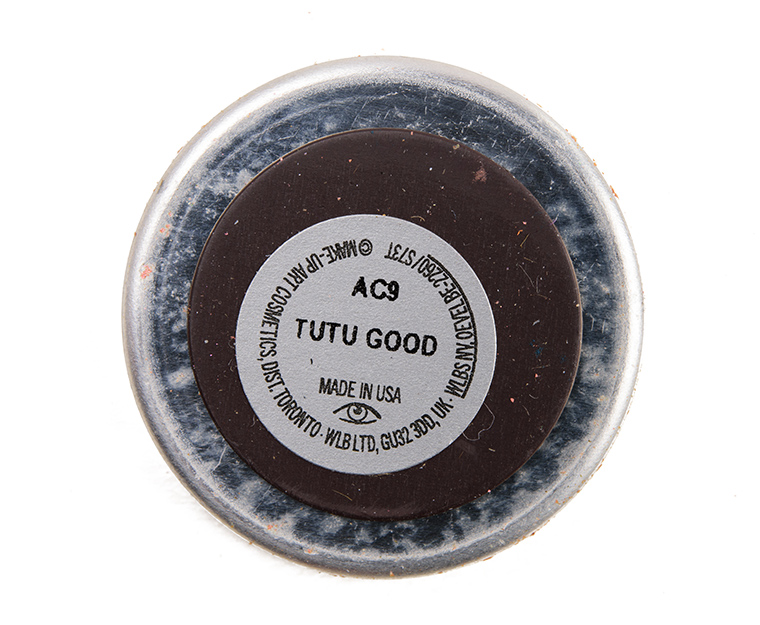









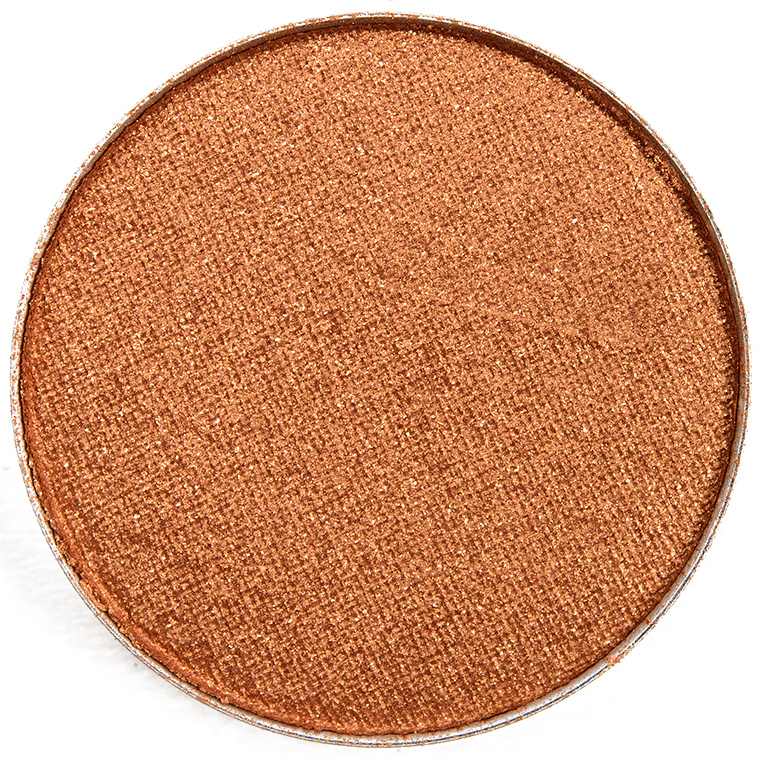










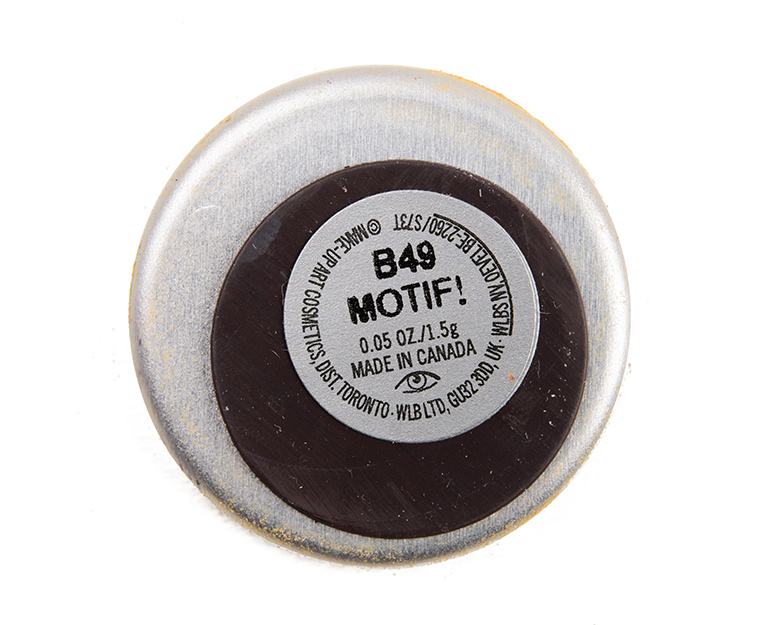
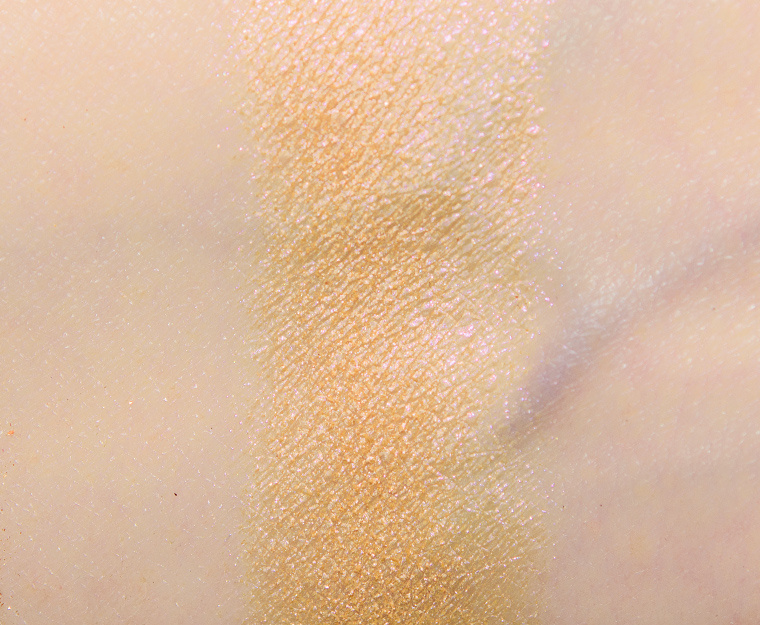
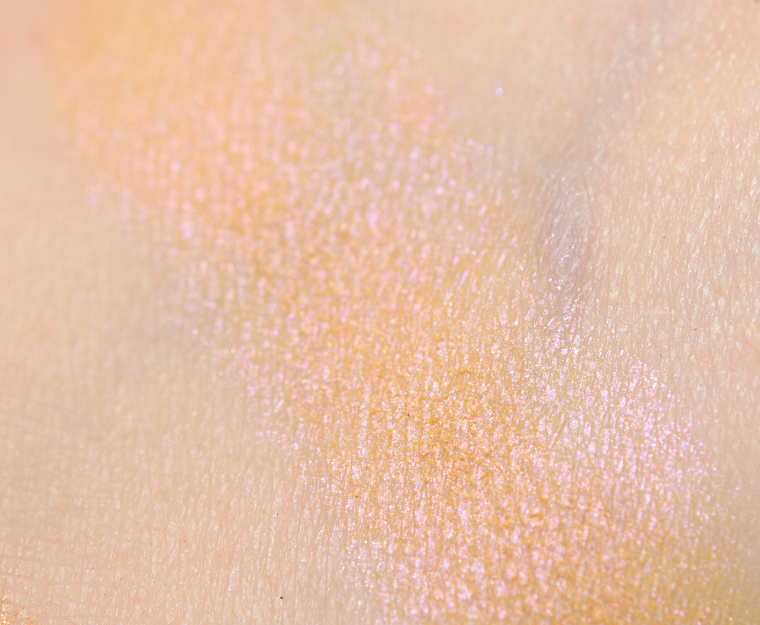




















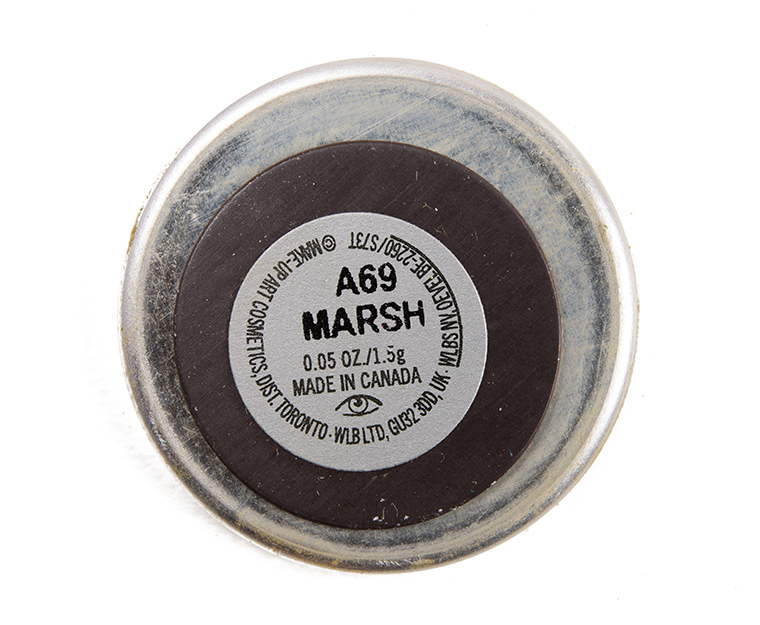
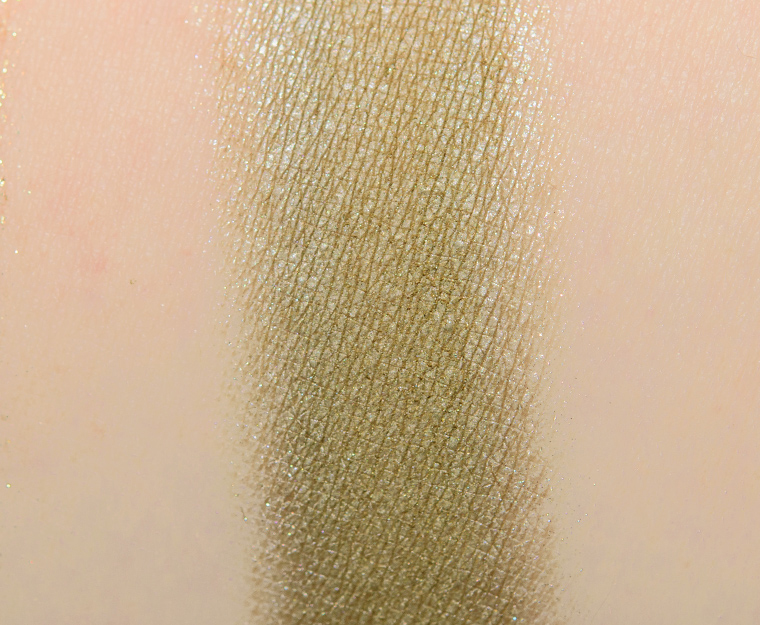






When I initially saw the swatches previewed I was convinced that I was going to get If It Ain’t Baroque. Now that I see that PML Jubilee is a dupe, I know I don’t need it.
Marsh is a very interesting shade… I sort of like it. Just wish that the quality was a little bit better.
I was thinking that if MAC was going to do a really popular shade like Jingle Ball Bronze they would do it so well as to blow the competition out of the water, but no – it’s very poorly done.
If It Ain’t Baroque and Marsh (nice to see a satin shade) are lovely colours.